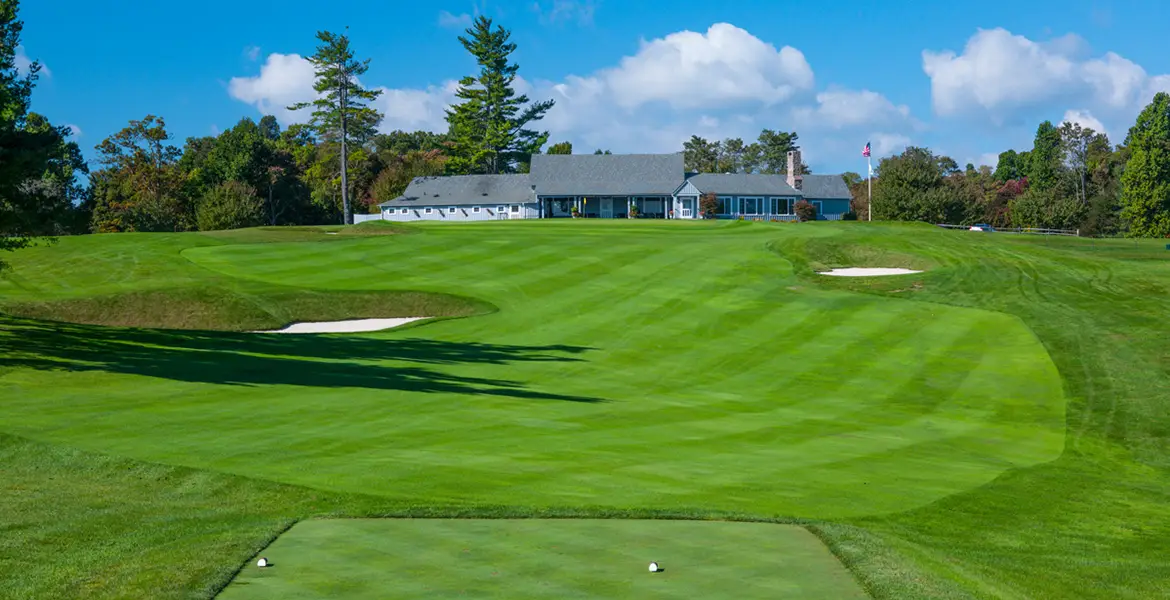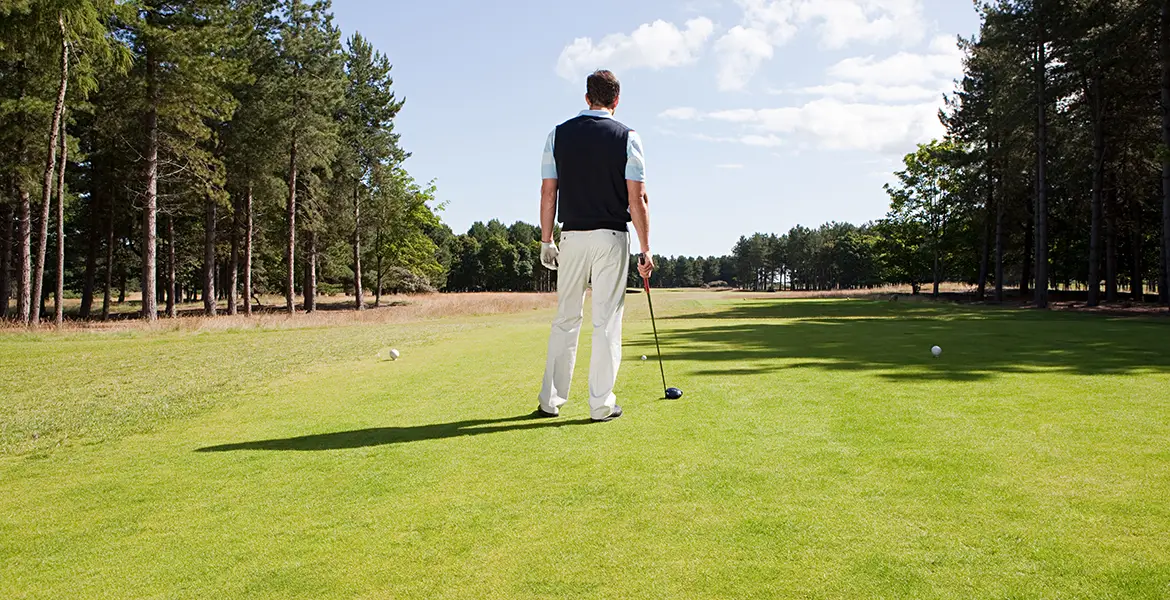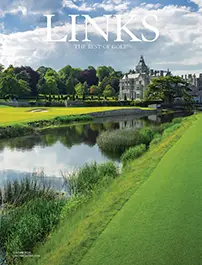Samuel Johnson, the worldly-wise 18th century scribe, once declared: “When a man is tired of London, he is tired of life.” Applying this maxim to the English capital’s most venerated, century-old golf club, one might suggest that the golfer who wearies of playing at Sunningdale should seriously consider a different sport.
Located 25 miles southwest of London center, both Sunningdale courses are staunch members of the Berkshire-Surrey “heathland club”: sandy underfoot, elegant pine and silver birch trees, swaths of heather, and a dash of gorse and rhododendron for good measure. Either 18 could justifiably lay claim to the title of “best inland golf course in the British Isles,” although most critics regard the more intimate and more characterful Old course, designed in 1901 by Willie Park Jr. and refined over the ensuing decade by the club’s first secretary, Harry Colt, as the jewel in Sunningdale’s crown.
The Old witnessed what is often hailed as the finest single round of golf ever played: Bobby Jones’ 66 (comprising 33 shots from tee to green and 33 putts) in a qualifying event for the 1926 British Open, a performance succinctly described at the time by Bernard Darwin as “incredible and indecent.”
The full splendor of Sunningdale is encapsulated by the view from the 4th green and adjacent 5th tee. Stretching out below, in the midst of two dark green, wooded oceans, are the emerald fairways of the 5th and 6th. Heather, which can appear rusty brown or purple depending on the season, a fair sprinkling of those silver sand bunkers, and an attractive pond complete the picture.
Although the 419-yard 5th is properly a right-to-left dogleg, a good drive can flirt with the trees on the left. The pond to the right of the fairway shouldn’t come into play but has historical interest: It is thought to be golf’s first manmade water hazard.

The Pine Valley-like 6th is a marvelous two-shotter. You drive to an island fairway surrounded by heather, then hit over sand and scrub to a slightly raised and devilishly contoured putting surface. By contrast, the 7th is a thoroughly old-fashioned, links-type hole, calling for a high tee shot over a sandy hill to find a beautiful S-shaped valley fairway; the approach—invariably from a sloping lie—is to a narrow plateau green defended by bunkers and mounds.
The view from the tee of the 475-yard 10th (above) is almost as celebrated as the one at the 5th. According to Peter Dobereiner, “If all the other holes were undistinguished, Sunningdale would still justify a pilgrimage by enthusiasts for the glory of the 10th, one of the most magnificent holes in Britain, or indeed the world.”
From the highest point on the course, you tumble spectacularly downhill to a fairway that looks far narrower than it is. The second shot is fired slightly uphill, often with a long iron or wood, to a large sloping green. At the back of the green is the club’s storied halfway house, in which one can—some would say must—sample the legendary Sunningdale sausage sandwich.
At 239 yards, the 15th is not only the longest but also possibly the best of the short holes. The green is large and diligently patrolled by four bunkers. A necklace of cross bunkers adds to the challenge of the down-and-up 16th. A potentially hanging lie and a cleverly angled green pose the problems at the dogleg 17th (top photo), while a legion of bunkers at the 18th—one on either side of the fairway to pinch the drive, four cross bunkers and another quartet around the green—threaten a sandy conclusion to a memorable round.
Standing immediately behind the 18th green is a majestic oak tree. It is the proud emblem of Sunningdale, and so perfectly symbolic of the club’s quintessentially English ambiance.






